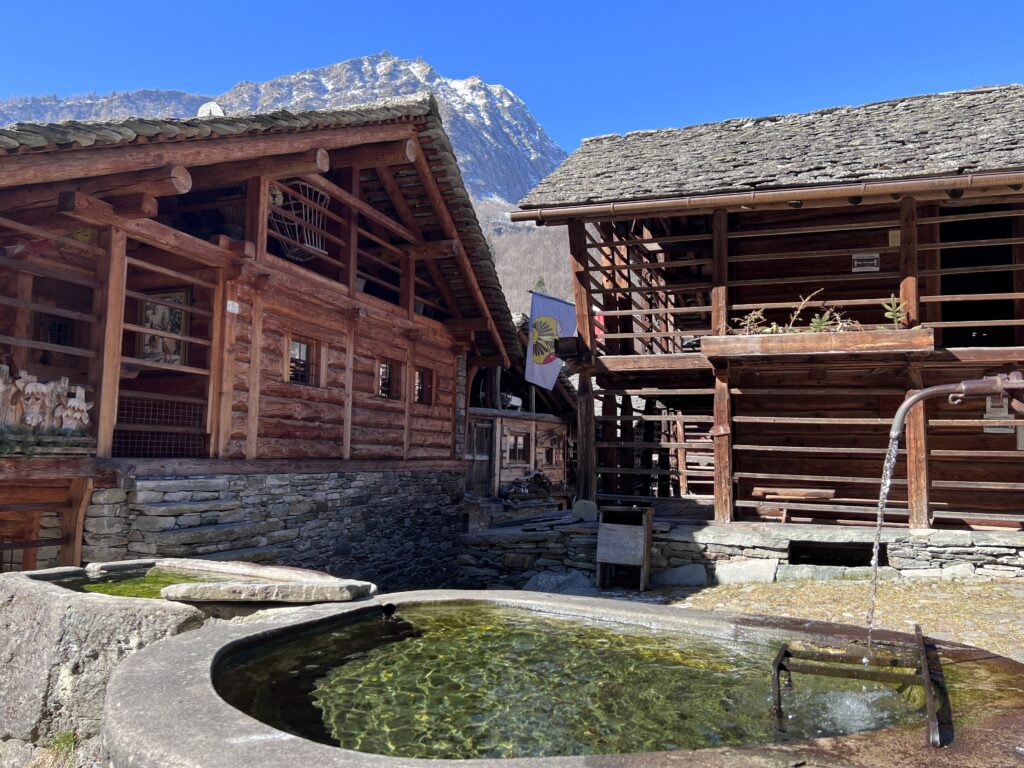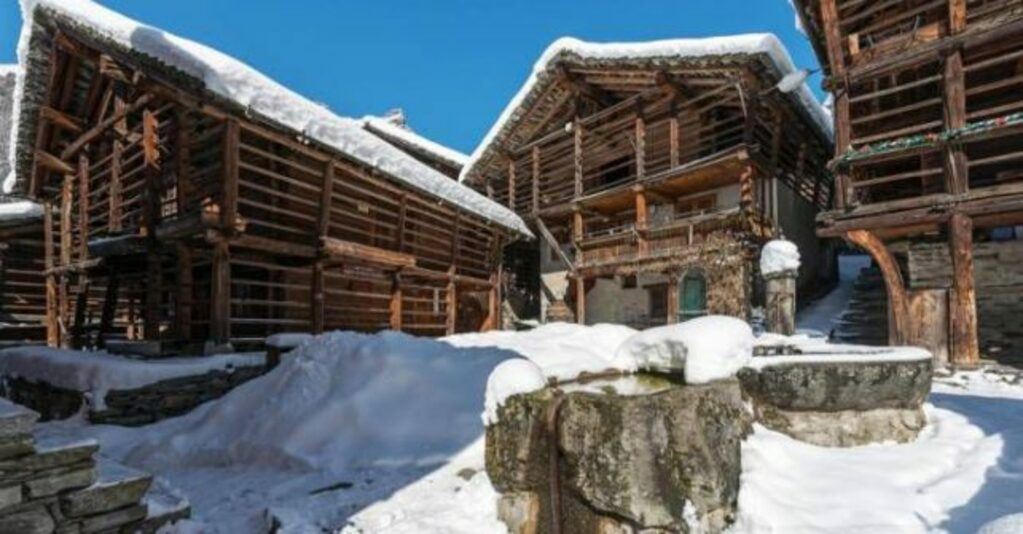
The Walser Museum in Alagna Valsesia is a place that captures the essence of the Walser community's daily life over the centuries.
The House:
In the Pedemonte hamlet, the Walser Museum has been set up in an ancient building dating back to 1628, offering a close look at the Walser architectural system in Alagna. The structure combines dwelling and stable under the same roof, utilizing animal warmth: the base consists of squared and overlapping stones, wedged into the natural slope of the terrain, providing shelter from winds and frost. The upper framework is made of large larch logs, ax-squared, properly seasoned, horizontally arranged and interlocked without the use of nails (Blockbau). This part rises to the roof covered with "Piode" or flat stone "Beole." The entire construction is surrounded, on three sides, by a covered walkway formed by wooden pillars and horizontal beams, where hay and cereals could be spread out to air and dry, sheltered from rain.
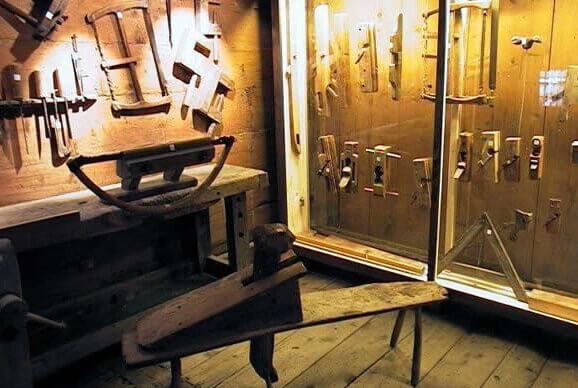

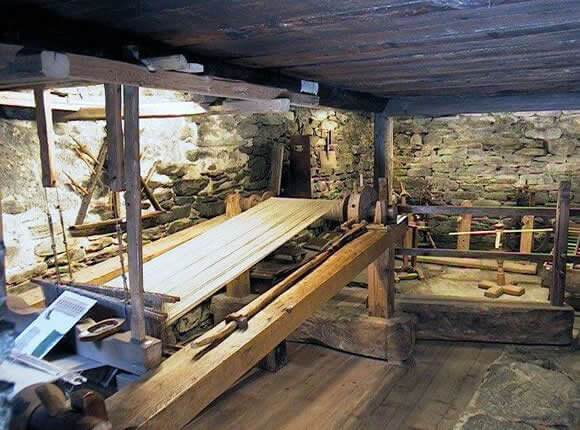
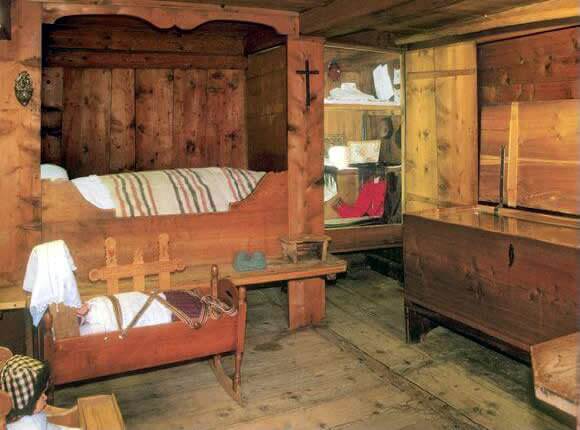
The Floors:
In the basement, you'll find the stable ("Godu") with stone slab flooring, the adjoining living area ("Stand") communicating with it, featuring wooden flooring, the kitchen ("Firhus") with cooking tools, the room for milk processing, and the area for preparing yarns and hemp weaving. The sleeping quarters, tiny and very low to conserve heat, were located on the raised floor, and the beds were mostly filled with dried beech leaves. The attic served as a storage, barn, and pantry.
The Exhibitions:
The exhibitions are carefully curated to provide visitors with an engaging and informative experience. Among the displayed items are traditional clothing, household tools, agricultural implements, and artisanal artifacts, all meticulously selected to narrate the history of this mountain community.
The Hamlets:
The Walser Museum is situated in a typical Walser settlement, self-sufficient and decentralized in scattered, small hamlets. Grouped around the community's religious protector, the few families collectively use the oven, mill, and fountain; the latter is a stone monolith often carved into two or three basins to prevent the promiscuous use of water among humans, animals, and for laundry. The chosen settlement location is always healthy and safe from landslides and avalanches. The buildings in Walser villages are consistently oriented in the same direction (the main front facing south and a wall to the north) to ensure good ventilation and maximum exposure to the sun, allowing hay or cereals placed on the lofts to make the most of its rays.
For those seeking a deeper perspective on the roots of Alagna Valsesia and wishing to better understand the historical and cultural context of the Alps, a visit to this museum is a crucial step!
